According to federal drinking-water surveys, benzene concentrations as high as 80 µg/l has been found in the groundwater systems that supply our drinking water. If your tap water contains benzene then you will want to remove it, and reverse osmosis systems may be an ideal way to do just that.
Reverse osmosis filtration systems can reduce Benzene from water by around 99%. The contaminated water is forced through the RO membrane that filters out the benzene leaving the water purified.
This article will explain what Benzene is, the health impacts of Benzene, and the effectiveness of a reverse osmosis system for removing benzene from water. We also provide a list of the best RO systems that remove Benzene and where to buy a Benzene water testing kit.
What is Benzene?
Benzene, also named ‘Benzol’, is a colorless or light yellow liquid (at room temperature) and has a petroleum-like odor.
However, benzene rapidly evaporates into the air and slightly dissolves in water.
Does Reverse Osmosis Remove Benzene from Water?
Point of use (POU) reverse osmosis systems have demonstrated they can efficiently remove up to 99.9% of benzene from water.
Reverse osmosis devices are also widely used to lower the levels of other volatile organic compounds (VOCs), as well as bacteria, heavy metals and organic contaminants. These systems are able to remove contaminants using a process that reverses the nature flow of water by osmosis.
The water flow is reversed in a way that it moves from a high concentration solution to a dilute solution through a semi-permeable membrane (with 0.0001-micron pore size). Ultimately, this means contaminated water is pushed through a fine membrane using pressure to produce clean, decontaminated drinking water.
This process is impressively effective. However, it is actually the activated carbon filtration stage before the water ever reaches the membrane, that removes benzene (and other VOCs). Reverse osmosis systems that use granular activated carbon (GAC) are particularly effective at removing benzene, and can remove up to 99.9% of the carcinogen.
It is important to note however, that optimal performance requires changing the filters and membranes regularly, to ensure they do not become clogged.
Tank Vs. Tankless RO Systems
Both tankless and tank-based reverse osmosis systems work the same way, except for a tank’s capacity and mechanical requirements. Your tap water goes through each filter in the system and passes through the carbon block filters or GAC and RO membranes to remove sediments, VOCs (including benzene), and other harmful contaminants.
A tankless reverse osmosis system is easy to install and produces fresh drinking water at the faucet on demand, while a system with a tank will store the treated water in a reservoir until it is needed.
As long as the system contains an activated carbon filter (preferably GAC) it can remove benzene from your drinking water, irrespective of the design.
Measuring the performance of reverse osmosis for removing benzene
The performance of a reverse osmosis unit is determined by calculating the membrane rejection rate and the system recovery rate. The quantity of the contaminant that is not allowed to pass through the filter is known as the membrane rejection rate.
You can use the rejection rate to estimate how well a treatment will work and its practicality
Occurrence of Benzene in Water
Most surface and groundwaters only have undetectable or trace amounts of Benzene. The Agency of Toxic Substance and Disease Registry reports that drinking water usually contains a benzene concentration of less than 0.1 ppb. Which is well below the maximum level allowed in drinking water.
Although, benzene in higher concentrations is more frequently found in well water contaminated with gasoline due to leaking underground storage tanks or a nearby hazardous waste site.
How Benzene Enters Our Water Supply
Benzene enters our water supply through three main avenues:
1. Industrial Processes
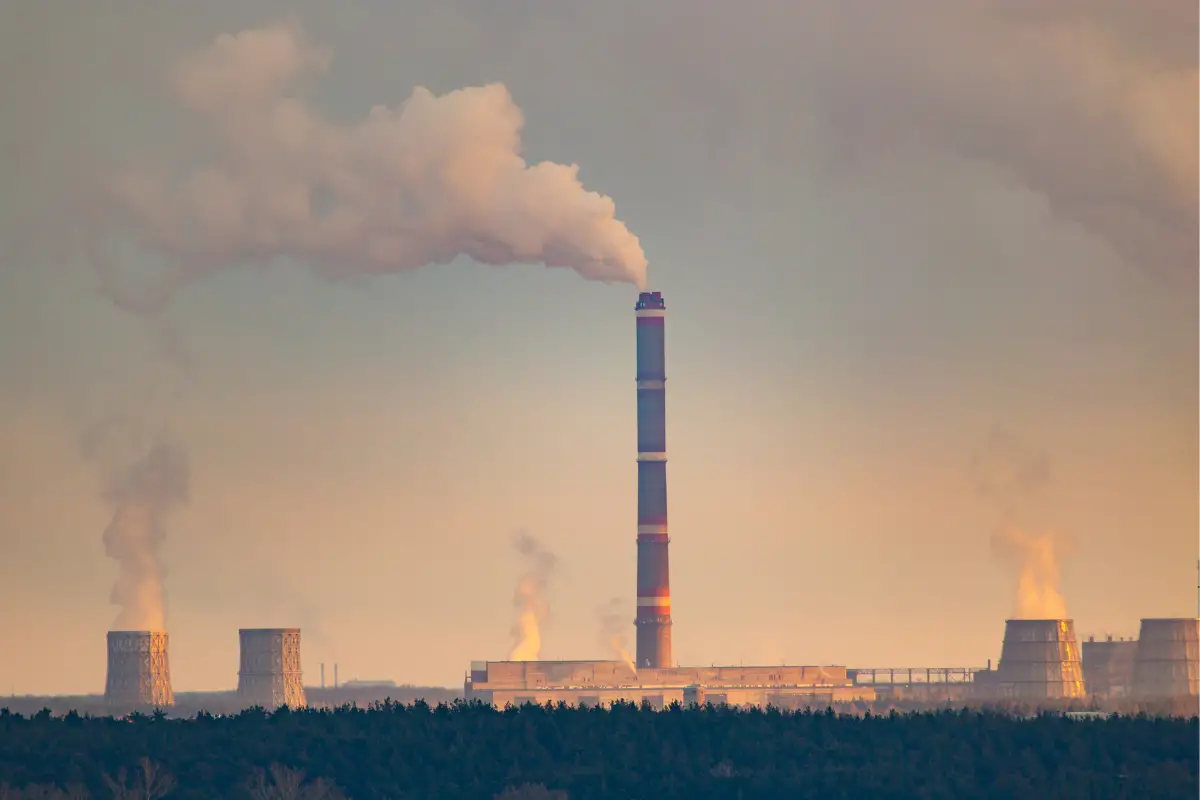
Human activities that use petroleum can lead to water being exposed to benzene. This is because benzene is naturally present in crude petroleum at levels up to 4 g/L or 4000 parts per million, which is roughly equivalent to 100 drops in 1 gallon. Petroleum is difficult to contain, and slight drops and leaks are enough to contaminate our water.
Groundwater, which is often our source of drinking water, can become contaminated with benzene when petroleum products are refined and manufactured, using them as chemical intermediates, and making industrial and consumer products.
Common benzene-containing products include styrofoam, rubber, detergents, nylon and plastics.
Other sources of benzene exposure include landfill leachate, industrial discharge, and the dumping of benzene-containing waste.
2. Volcanoes and Forest Fires

Benzene is naturally generated by forest fires and volcanoes, which can contaminate water with benzene if present near a water source. The benzene is released in the smoke as the wood burns, or dispersed into the atmosphere as a volcano erupts.
3. Rain

Because benzene is very soluble in water, it can be removed from the air by rainwater.
As the rain falls to the ground, benzene that was previously in the air can now enter rivers and lakes and can get into the groundwater as it seeps through the soil. In the same way, snow can also collect benzene from the air as it falls to the ground.
The levels of benzene in the air can be elevated around built-up or industrial areas due to off-gassing from structures, from smoke, gas stations etc.
Previous studies have shown that the Southwest is particularly susceptible to high levels of benzene air pollution, including California, Nevada and Utah.
Health Effects of Benzene
Acute Exposure
Acute occupational exposure to benzene may lead to narcosis, which is a state of drowsiness or unconsciousness. Symptoms typically includes headache, nausea, fatigue, trembling, and loss of consciousness.
Some other health effects of acute exposure are irritation of the respiratory tract, eyes, and skin, and Bone marrow toxicity, which has the potential to lead to aplastic anemia – a serious condition where the bone marrow can no longer make new blood cells.
Chronic Exposure
According to International Agency for Research on Cancer (IARC), Benzene is a group A human carcinogen, and chronic (or longterm) exposure can lead to tumors, leukemia, skin cancer, and lung cancer.
Chronic exposure has also been linked to:
- Immune system depression. Benzene has the capacity to impair the immune system by lowering white blood cell counts and altering antibody levels in the blood.
- Pancytopenia – a deficiency of red cells, white cells and platelets in blood.
- Hematotoxicity, such as the destruction of red blood cells.
- Genotoxic effects, such as DNA damage, chromosomal aberrations, and gene mutations.
If you are concerned about the levels of benzene in the air, Plentiful Air has a detailed guide on how to remove it – available here.
EPA Recommendations on Benzene in Water
The EPA recommends a maximum benzene level of 5 ppb in drinking water, that’s just 5 drops in 1 billion drops of water. However, the EPA has established a target of 0 ppb for benzene concentration in drinking water as well as other bodies of water, including rivers and lakes because of its known links to cancers, including leukemia.
In fact, exposure to just 10 ppb of benzene in drinking water over the course of a lifetime (or 0.4 ppb of benzene in the air) increases the risk of developing cancer.
Best Reverse Osmosis Filtration Systems for Removing Benzene from Water
Here’s five of the best reverse osmosis systems for benzene removal.
1. Crystal Quest 1000C Reverse Osmosis Under Sink Water Filter
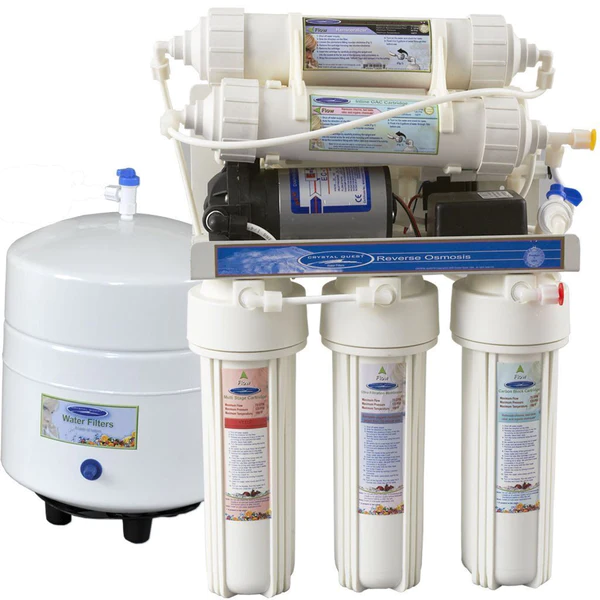
On contacting customer service of Crystal Quest regarding the percentage of Benzene removed by the RO system, they responded that ‘‘Yes, an RO would remove benzene and removal would be 95% or more.”
The Crystal Quest RO under-sink filter can remove benzene from water.
The water travels through an incredible 12-stages of filtration, including:
- a 5-micron solid carbon cartridge,
- 0.020-micron Ultrafiltration (UF) membrane,
- 1-micron prefilter pads,
- granulated activated carbon (GAC),
- ion exchange resin,
- two beds of Eagle Redox Alloy® (Oxidation/reduction process), and
- a reverse osmosis membrane.
This under-sink filter can produce 50 gallons of water per day. The Crystal Quest stainless steel pressure storage tank has a 3.2-gallon capacity and a polypropylene inner liner.
Pros
- Multiple optional cartridges for removal of specific contaminants
- Easy to install and maintain
- High-efficiency water filtration
2. Frizzlife PD500 Tankless Under Sink RO System
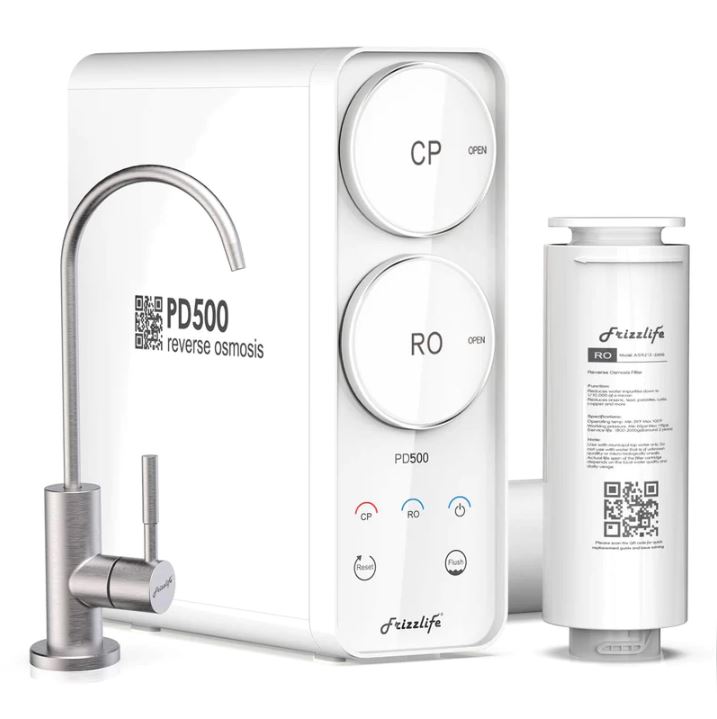
We contacted Frizzlife PD500 manufacturers to discover how reverse osmosis and their systems remove Benzene and they responded that ”Benzene is a kind of VOC, and the average reduction of our RO systems can reach more than 95%’‘.
The Frizzlife PD500 under sink reverse osmosis water filtration system uses a composite prefilter that combines activated carbon with a thermoplastic polymer to effectively removing Benzene.
This model uses a 5-stage filtration system with the finest size pores at 0.0001 microns to remove more than 1000 contaminants from water.
A total dissolved solids (TDS) meter is included so that you can check the quality of your water on the go.
With a large capacity of 400 gallons per day, this tankless RO water filtration system supplies instant pure water to the provided lead-free faucet, filling a cup in just 10 seconds.
Pros
- Space efficient design
- Easy installation
- TWIST-IN cartridge design for easy filter replacement
- Filter life indicator
3. Waterdrop 800 GPD Tankless RO System with UV Sterilizing Light
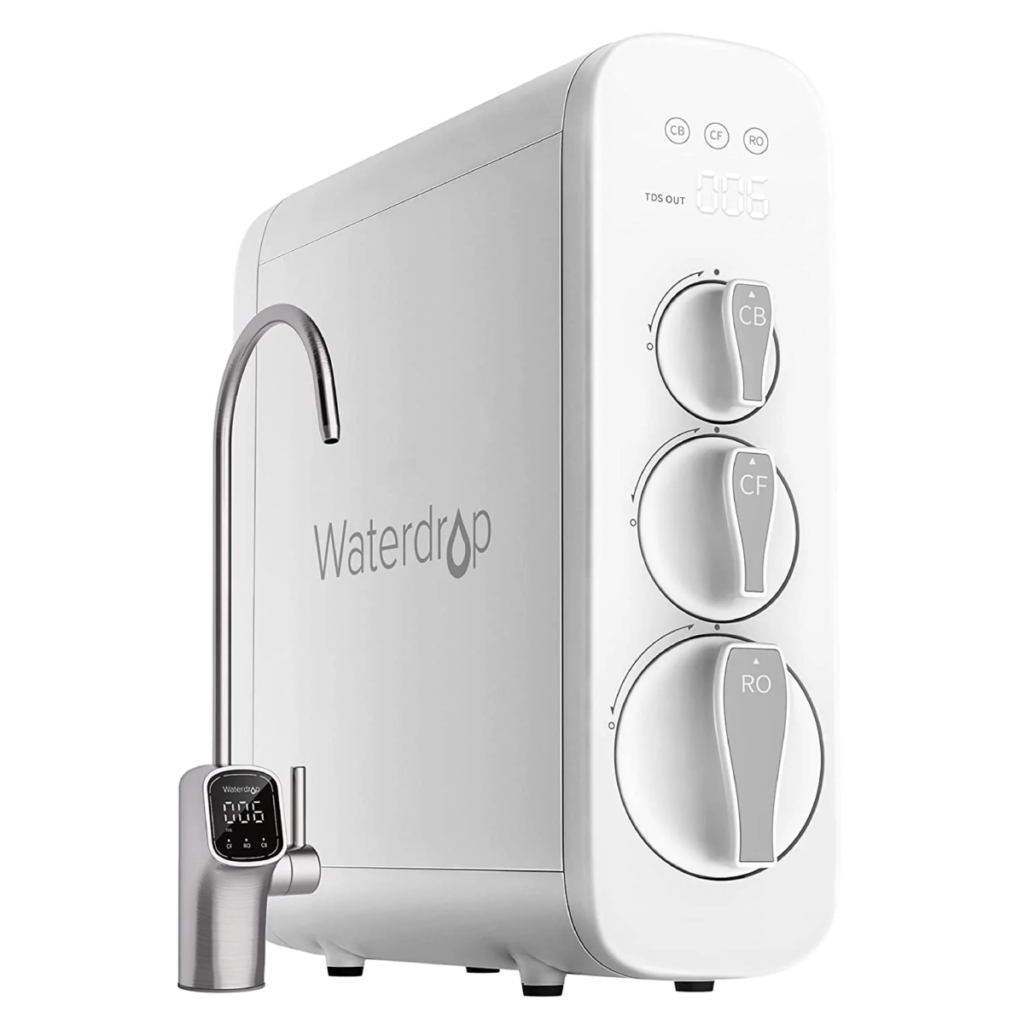
We contacted Waterdrop manufacturers to know how reverse osmosis and their systems remove Benzene and they replied that ‘‘An RO unit can effectively remove 90% of most harmful substances from the source water, including Benzene’‘.
Waterdrop WD-G3P800-W RO system features a powerful three-stage filtration system with a reverse osmosis membrane filter, activated carbon, pre-sediment, and carbon block filter for efficient removal of benzene, along with 99% of other harmful water contaminants.
A layer of scale inhibitor prevents the formation of scales on the reverse osmosis membrane so it can effectively remove impurities greater than 0.0001 microns.
This model has a fast flow rate and takes only seconds to fill a glass of water. It produces an impressive 800 gallons of water per day.
A third-party testing laboratory reports it reduces TDS by more than 90%, the same value required for NSF/ANSI standards (58 & 372). Besides that, this product meets the UK Conformity Assessment (UKCA) and EU Standards for safety.
Pros
- Compact and stylish design
- Smart screen display spigot on the faucet
- TDS indicator
- Filter life indicator
- Malfunction alert
- Free of BPA and lead
4. PENTAIR FreshPoint 5-Stage
The PENTAIR FreshPoint under-counter reverse osmosis water filtration system (amazon link) comes with a 5-stage filtration system for efficiently removing Benzene.
For purified and better-tasting water, tap water is passed through a carbon block filter with a poly-spun shell, reverse osmosis membrane, twin carbon block with lead reduction media, and importantly granular activated carbon (GAC).
With its twin carbon block and high-efficiency membrane technology, this system produces up to 75 gallons of purified water a day. Another unique feature of PENTAIR that outweighs it over other products on the list is the ease of changing filters due to color-coded cartridges.
The FreshPoint RO filtration system is tested and certified against NSF/ANSI standards 42, 53, 58, and CSA B483.1, confirming it can reduce chlorine, VOCs (such as benzene), total dissolved solids and heavy metals.
PROS
- Easy to install
- Air-gap faucet to prevent mixing of contaminated water with purified water
- Free of chemical additives
- Water storage tank included
5. APEC ROES-50 Reverse Osmosis Drinking Water Filter System
The APEC ROES-50 RO water filter system boasts the US-made 5-stage filtration system for efficiently removing up to 99% of water contaminants, including benzene.
The premium quality carbon block filter, reverse osmosis membrane, and refining coconut carbon filter is powerful tools for trapping water contaminants and producing clean and fresh-tasting water.
With a highly efficient filtration system, APEC produces plenty of purified water and with every purchase, APEC brings clean drinking water to under-privileged areas of the world.
Pros
- Long-lasting
- 100% lead-free faucet
- Food-grade tubing
- Easy installation
- Easy maintenance
- WQA(Water Quality Association) certified
How to Test for Benzene in Water?
Benzene in water can be tested by sending samples of your water to a trusted water testing services provider.
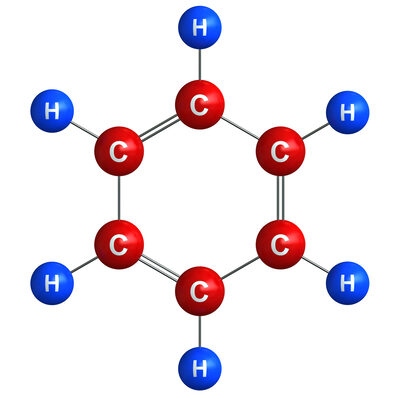
MyTapScore have a good quality VOC home water testing kit for $140.00 that includes testing for a suite of different Benzene contaminants. It’s an expensive test but it covers 60 different contaminants including 16 different forms of Benzene.
- Order today and they’ll send out the kit and instructions on how to collect the samples.
- Shipping is included.
- Samples are tested in a certified laboratory.
- You’ll get the results in about 5 days.
For more information and to order your VOC water testing kit click here.
What Happens if I Drink Water with Benzene in it?
According to the CDC, drinking water containing excessive amounts of benzene can cause dizziness, vomiting, stomach irritation, sleepiness, rapid heart rate, coma, convulsions, and even death. The health implications of drinking water containing low Benzene levels are unknown.
Does Boiling Water Remove Benzene?
There is no evidence that boiling water can remove Benzene. Using granular activated carbon (GAC), packed bed aeration, and reverses osmosis systems are recommended for the safe removal of benzene from water.


